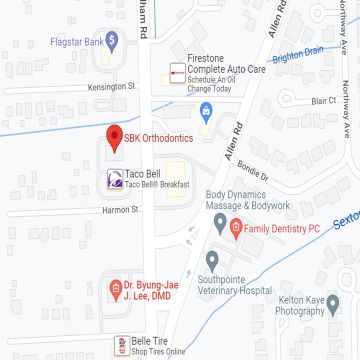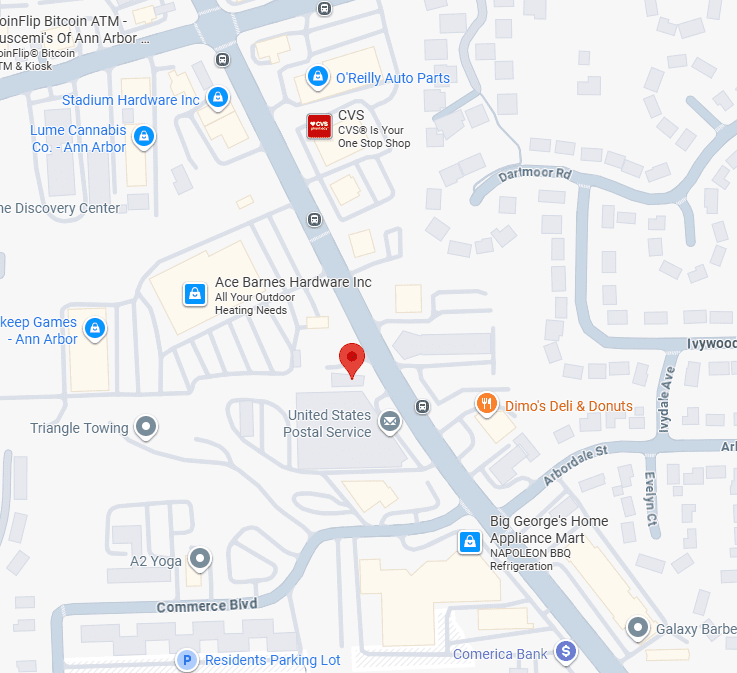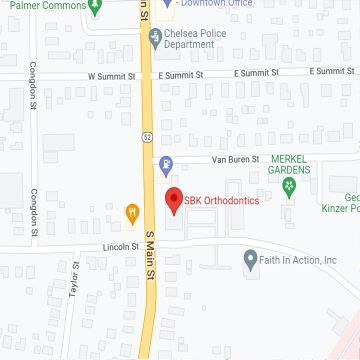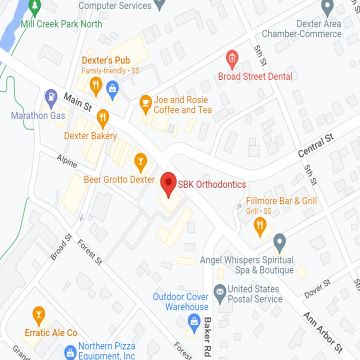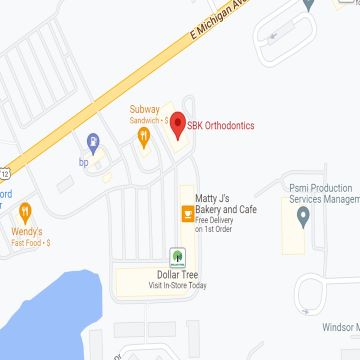Managing Orthodontic Challenges: Understanding and Addressing Loose Brackets

The progression of orthodontic treatment is a commitment to achieving a beautiful, healthy smile. Indeed, while advancements in orthodontic technology in traditional braces have revolutionized the treatment process, some challenges can still arise.
A common issue that orthodontic patients may encounter is the occurrence of loose brackets. Addressing this concern promptly is crucial for patients to ensure the effectiveness of treatment and prevent potential setbacks.
This article aims to delve into the complexities that are particular to traditional metal braces, explore the causes of loose brackets, and provide valuable insights into addressing this challenge. We will also discuss the importance of timely action, the potential consequences of neglecting a loose bracket, and the proper steps to take in collaboration with your orthodontist for a professional repair.
Understanding Traditional Metal Braces
Traditional Metal Braces represent a cutting-edge advancement in orthodontics, offering a more comfortable and efficient alternative to their predecessors. Unlike previous braces systems, traditional metal braces now use cutting-edge materials such as NITI wires and smaller brackets that provide an efficient and seamless treatment for patients. The enhancement of materials, reduction of materials size, and technology advancements in reducing friction allow patients smoother tooth movement.
These braces boast numerous advantages, such as shorter treatment times, reduced discomfort, and easier maintenance than their predecessors. However, despite these benefits, patients may encounter challenges, and one of the most common is the occurrence of loose brackets.
Causes of Loose Brackets in Traditional Metal Braces
Understanding the potential causes of loose brackets is paramount for both orthodontists and patients. Several factors can contribute to this issue:
Mechanical Stress
Patients might develop certain habits like chewing on hard objects or biting into exceptionally tough foods. These habits exert excessive force or pressure on the brackets, often leading to bracket detachment. Patients who tend to bite pencils and nails or unconsciously grind and clench their teeth while asleep produce an unwanted strain that compromises the bracket cementation.
Poor Oral Hygiene
A patient’s inadequate oral hygiene practices can lead to the accumulation of plaque and bacteria around the brackets, compromising the adhesive bond, which causes the brackets to loosen. Additionally, poor oral hygiene poses the risk of developing tooth decay, which might alternatively compromise a tooth’s enamel, eroding it. Enamel erosion might debilitate the tooth surface where the bracket sits.
Trauma
Patients might suffer from accidental impact to the face or mouth, whether from sports injuries or other incidents. A direct impact on the braces’ structure can dislodge brackets and compromise the integrity of the orthodontic appliance.
Dietary Choices
Patients wearing Traditional Metal Braces must follow their orthodontist’s dietary recommendations to avoid bracket detachments. For instance, consuming sticky or hard foods that stress the braces can increase the likelihood of brackets becoming loose.
Addressing Loose Brackets in Traditional Metal Braces
How Long Can You Go With a Loose Bracket?
The duration a patient can go with a loose bracket varies based on the severity of the issue. While some brackets may remain partially attached without causing significant disruption, prompt attention is crucial to prevent further complications. Nevertheless, without exception in the number of detached brackets, prompt action contacting your orthodontist is crucial to keep treatment on track.
What Happens if You Don’t Fix a Loose Bracket?
Patients should not neglect a loose bracket as it poses several adverse consequences. First, it may lead to irregular tooth movement, hindering the treatment progress and compromising the outcome. Secondly, prolonged exposure to a loose bracket can cause discomfort, irritation, and even damage to the surrounding oral tissues. Thirdly, and yet more seriously, a loose bracket might also detach from the wire, which exposes a patient to accidentally swallowing it, causing an ER emergency.
Contacting Your Orthodontist for a Professional Repair
When a patient faces a loose bracket, the first and most crucial step is to contact your orthodontist. Attempting to fix the issue independently may lead to further complications. Taylor Orthodontic professionals possess the expertise and tools to assess the situation accurately and provide permanent and appropriate solutions.
The Process of Repairing Loose Brackets by the Orthodontist
Once you contact your Ann Arbor orthodontist, they will assess the extent of bracket looseness and determine the appropriate course of action. The typical repair process involves:
Cleaning and Preparing the Bracket Site
The orthodontist will clean the tooth surface and bracket site to ensure optimal conditions for reattachment.
Reapplying Adhesive
With the help of high-quality orthodontic adhesive, the specialist secures the bracket back into its designated position on the tooth surface.
Curing the Adhesive
Once an orthodontist cements the bracket to the tooth surface, they use a special light to cure the adhesive, ensuring a strong and durable bond between the bracket and the tooth.
Checking and Adjusting
The orthodontist will thoroughly check to ensure the bracket is securely in place and make necessary braces adjustments.
Preventing Loose Brackets in Traditional Metal Braces
While addressing loose brackets is essential, a proactive approach to prevention can significantly contribute to a smoother orthodontic quest. Let’s explore key strategies to prevent the occurrence of loose brackets in Traditional Metal Braces.
The Role of Good Oral Hygiene in Preventing Loose Brackets
As we previously noted, maintaining excellent oral hygiene is fundamental in preventing loose brackets. Here are some crucial steps to incorporate into your oral hygiene routine:
Regular Brushing
Brush your teeth after every meal, paying close attention to the brackets and wires. Orthodontists recommend patients use a soft-bristle toothbrush and fluoride toothpaste.
Flossing
Patients might encounter challenges in removing plaque and debris with a toothbrush. Therefore, flossing around the brackets helps clear difficult-to-reach spaces between teeth and appliances. We encourage patients to use orthodontic special floss threaders that can aid in this process.
Mouthwash
An antimicrobial or fluoride mouthwash perfectly complements your oral hygiene routine. It helps reduce the risk of plaque buildup and supports a healthy oral environment.
Interdental Brushes
Special interdental brushes are an optimum tool for dislodging problematic food residues that accumulate in entrenched and hard-to-reach nooks and crannies. By design, interdental brushes help clean between the brackets and wires, providing an extra layer of protection against plaque accumulation.
Incorporating these practices into your daily routine can go a long way in preventing loose brackets and maintaining optimal oral health throughout your orthodontic treatment.
Following Dietary Restrictions to Avoid Bracket Damage
Diet is crucial in preventing bracket damage and minimizing the risk of brackets becoming loose. While Traditional Metal Braces are more durable than traditional braces, patients must be mindful of their food choices. Here are some dietary guidelines to follow:
Avoid Sticky Foods
Sticky or chewy foods can exert excessive force on the brackets, leading to loosening. Steer clear of candies, caramels, and other sticky treats.
Minimize Hard Foods
Hard foods like nuts, popcorn, and ice can put your braces at risk. Opt for softer alternatives to protect the integrity of your orthodontic appliances.
Cut Food into Smaller Pieces
Cut them into smaller, more manageable pieces rather than biting into large, hard items. Patients can minimize the likelihood of bracket damage by reducing big chunks into smaller pieces and avoiding putting too much stress on the brackets.
Stay Hydrated
Drinking plenty of water helps wash away debris and bacteria, contributing to a cleaner oral environment.
Regular Appointments and Their Importance in Monitoring Treatment Progress
A scheduled orthodontic appointment is not just about adjustments; they play a crucial role in helping the orthodontist monitor the progress of your treatment. Regular check-ups allow your orthodontist to identify any emerging issues, including the potential for loose brackets. Here’s why these appointments are indispensable:
Early Detection of Issues
Regular appointments enable orthodontists to detect any signs of bracket loosening or other complications early on. Early intervention can help the specialist prevent the problem from escalating.
Adjustments and Progress Monitoring
Orthodontic adjustments are a normal part of treatment. Your orthodontist will make necessary tweaks to ensure your braces work optimally, contributing to efficient tooth movement.
Addressing Patient Concerns
If you notice any discomfort or irritation or suspect a loose bracket between appointments, the orthodontist has an opportunity to address your concerns promptly with the help of regular check-ups.
Guidance and Education
Orthodontists use these appointments to educate patients on proper care, dietary restrictions, and any adjustments needed to maintain the integrity of the orthodontic appliances.
The Benefits of Choosing an Experienced Orthodontist
Patients must diligently and cautiously choose an orthodontic specialist who could significantly impact the success and smoothness of their treatment. Opting for an experienced orthodontist brings several advantages:
Expertise in Traditional Metal Braces
Experienced orthodontists are well-versed in the nuances of Traditional Metal Braces, ensuring they can provide precise and effective treatment tailored to your specific needs.
Accurate Diagnosis and Treatment Planning
A seasoned orthodontist can accurately diagnose orthodontic issues and develop a comprehensive treatment plan. This reduces the likelihood of complications, including loose brackets.
Effective Communication
Clear communication between the orthodontist and the patient is crucial. An experienced practitioner can explain the treatment process, potential challenges, and preventive measures in a way that fosters patient understanding and cooperation.
Access to Advanced Technology
Established orthodontists often invest in state-of-the-art technology, enhancing the accuracy and efficiency of the orthodontic treatment process.
Timely and Responsive Care
Choosing an experienced orthodontist ensures prompt and responsive care. In case of a loose bracket or any other issue, you can trust that your orthodontist has the knowledge and skills to address it efficiently.
Choose Excellence in Orthodontic Care
We are glad you explored our guide on managing loose brackets in Traditional Metal Braces. As orthodontic experts, we emphasize the importance of proactive measures in maintaining the integrity of your orthodontic appliances.
At SBK Orthodontics, with offices conveniently located in Ann Arbor, Chelsea, Dexter, Saline, and Taylor, we are committed to providing exceptional care for your orthodontic passage. Our experienced orthodontists specialize in Traditional Metal Braces, Clear Ceramic Braces, and Invisalign Clear Aligners, ensuring precise and efficient treatment.
To recap, incorporating good oral hygiene practices, following dietary guidelines, attending regular appointments, and choosing an experienced orthodontist are key factors in preventing and addressing loose brackets. By taking these proactive measures, you pave the way for a successful orthodontic treatment outcome.
Take a gratifying decision to a confident and radiant smile with SBK Orthodontics. Contact us today to schedule a consultation and experience the excellence of specialized care tailored to your unique orthodontic needs. Your smile transformation begins here.




